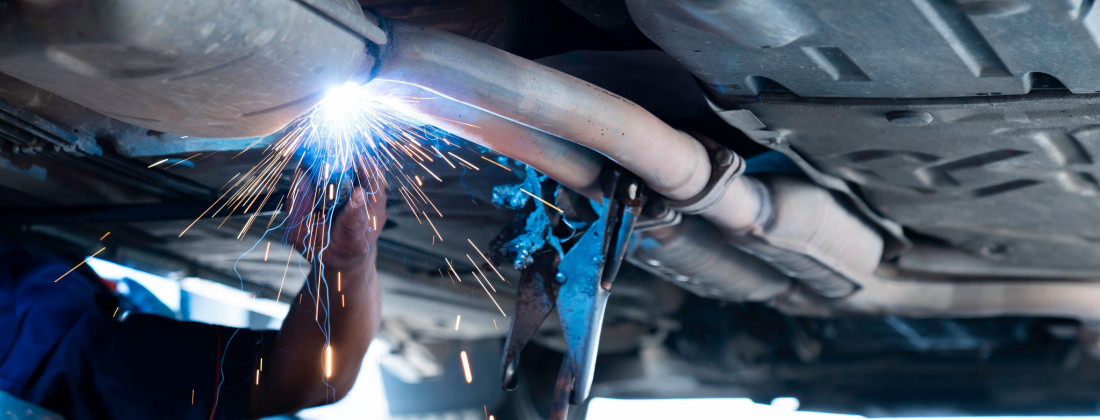
The term ‘mufflers’ refers to the equipment found or installed on the back side of a car or truck. It is responsible for muffling the sound created by a vehicle’s engine. Engines produce a lot of power, which results in a slew of pulsing noises that resonate through the exhaust valves.
Every minute, thousands of these pulses are produced. Your vehicle will be extremely noisy if it does not have a properly functioning muffler. Excessive noise is a strong indicator that you need a new muffler.
The muffler’s capacity should be large enough to allow the gasses to expand to approximately atmospheric pressure before being vented into the air. Furthermore, the muffler should not have any significant restriction to flow since that would cause undue back pressure.
It comprises many baffles that are spot welded inside the cylindrical body. These baffles’ objective is to prevent the direct route of the exhaust gasses, causing the gasses to traverse a longer course in the muffler. The baffles utilized in the muffler come in a variety of designs.
In this muffler type, the exhaust gasses entering the mufflers are bifurcated into two parts to flow in the muffler. The appropriate lengths of these paths are then altered; they come out of the muffler, and crests of one wave overlap with the second wave’s drag.
As a result, they neutralize each other out, theoretically decreasing noise to zero. This is achieved if the lengths of the two pathways differ by half a wavelength. However, this is not practical since exhaust gas noise is a mixture of multiple frequencies at different engine speeds. However, discernible noise is minimized.
This type comprises a series of Helmholtz resonators through which a pipe with an access port flows. Helmholtz is the name of the individual who invented this type of Muffler. This pipe transports exhaust gasses and the resonator eliminates the fundamental and higher harmonics of engine noise.
This muffler consists of a perforated tube, around which a sound-absorbing material like fiberglass or steel wool is placed. The exhaust gasses pass through the perforated tube. The sound-absorbing material reduces the high-pressure fluctuation of the exhaust gasses, thus reducing the noise intensity.
As a motor vehicle is a mechanical system, there is a chance of technical glitches. Here are some key reasons that your muffler would need to be replaced:
When you start hearing loud or odd noises, this is an indication that your muffler needs to be fixed. Because one of the muffler’s tasks is to limit the noise generated by your vehicle’s exhaust system, sudden loud or odd noises indicate an underlying problem. If your engine is making unusually loud noises, it is critical to arrange a repair before the problem escalates. Leaving it unattended will result in:
Driving on rocky roads regularly can cause internal car parts to shake. This causes them to become loose, clogging the muffler. Clogging indicates that your muffler has to be repaired.
If your muffler exhaust system is in need of repair or replacement, you need not worry Tirecraft Roadking, Calgary is here to assist you with its quality auto services. Contact us today to discuss your vehicle needs.